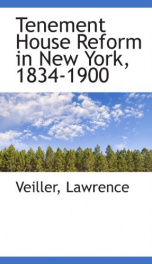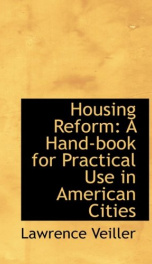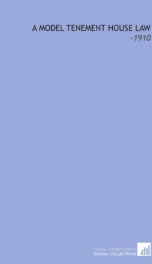tenement house reform in new york 1834 1900

Purchase of this book includes free trial access to www.million-books.com where you can read more than a million books for free. This is an OCR edition with typos. Excerpt from book: ment house law, without regard to the safety or health of the occupants, one begins to realize the magnitude of the task which confronted the newly organized Board of Health. The reports of the Association for Improving the Condition of the Poor for the following five years show a decided improvement in the tenement houses of the city, especially in regard to cellar dwellings and to the general sanitary condition of buildings, the Sanitary Police being able to enforce greater cleanliness than had heretofore existed. While the new law had remedied certain defects, and had to a certain extent improved existing tenement houses, yet it soon became evident that it did not meet the conditions in such a way as to secure good types of buildings among those newly erected. In 1871 we find the following statement in the report of the Association for Improving the Condition of the Poor for that year: " The tenant house system might be indefinitely enlarged upon but space forbids. Though greatly improved in late years., it is still the disgrace and curse of the city, that half of the inhabitants live in this class of houses, from which proceeds three-fifths of the crime and three-fourths of the mortality. If we would abate these evils, the wretched domiciliary conditions of the occupants of these tenements must be improved." THE MOVEMENT OF J879MR. WHITE'S MODEL TENEMENTS. Between this time and 1877 little attention was given to the tenement house problem, except in the regular work of the Board of Health and the city Building Department. In 1877 Mr. Alfred T. White, of Brooklyn, having seen the model tenements of Sir Sidney Waterlow's Industrial Dwellings Company in London, became imbued with the idea that the best way in which he could benefit the working people of New York City...
Info about the book
Author:
Series:
Unknown
ISBN:
0312574010
Rating:
3.5/5 (4)Your rating:
0/5
Languge:
English
Users who have this book
Users who want this book
What readers are saying
What do you think? Write your own comment on this book!
write a commentif you like tenement house reform in new york 1834 1900 try:
Other books by this author
Do you want to read a book that interests you? It’s EASY!
Create an account and send a request for reading to other users on the Webpage of the book!




